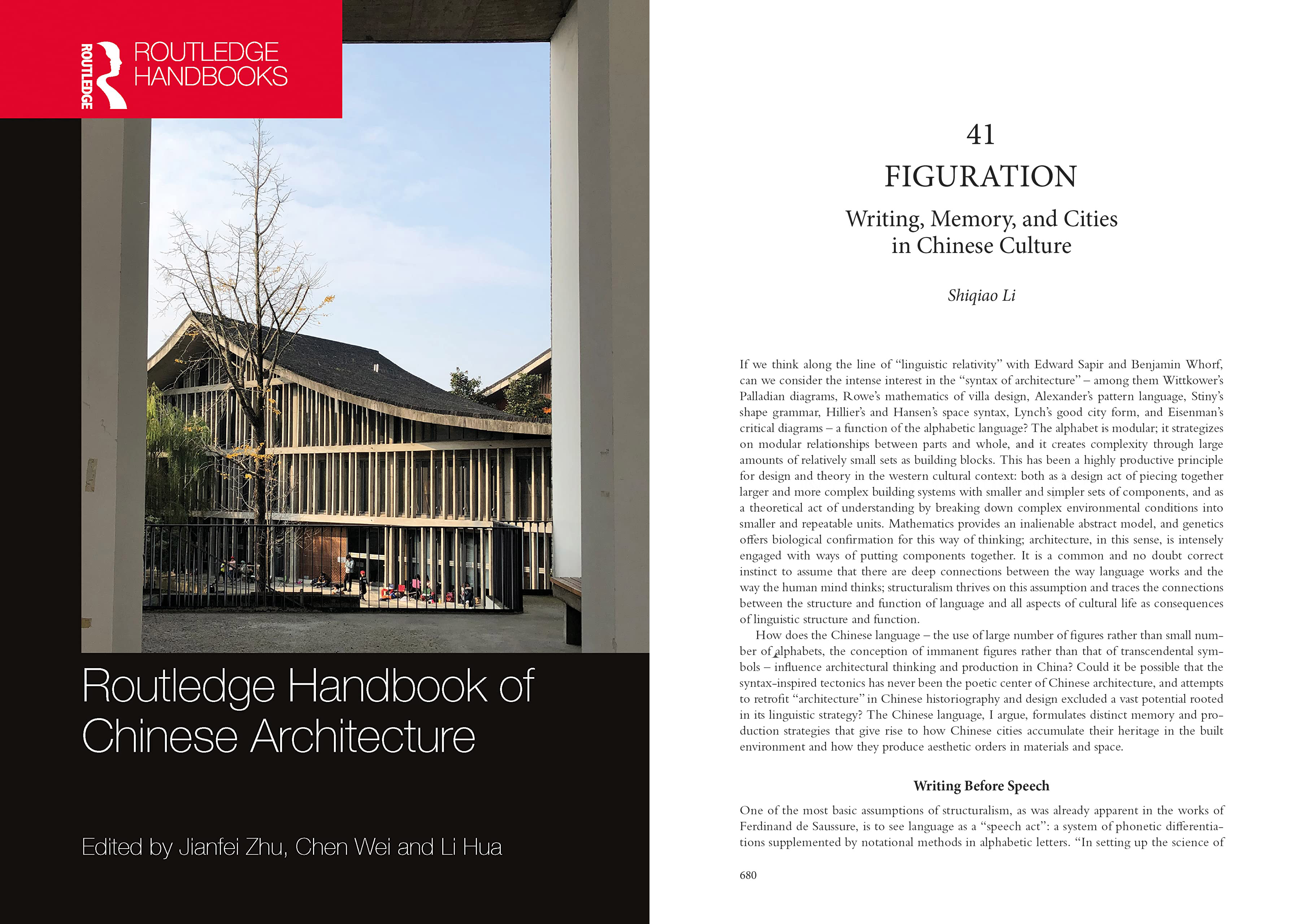
Figuration: Writing, Memory, and Cities in Chinese Culture
Shiqiao Li
This chapter argues that the Chinese language has a distinct impact on how memory and cities are produced in the Chinese cultural context, but this is rarely understood in normative architectural discourse. Retrofitting a Western notion of architecture onto Chinese cities leaves a significant portion of Chinese architecture out of our knowledge and misunderstands its poetic center. Through an elaboration of the primary importance of writing, a unique strategy of memory associated with writing, and how this "figuration" process of the biophysical world imposes a regime of occupation resulting in beauty and violence, this chapter explores what it would be like if architecture is intertwined with what may be described as a Chinese language-thought.
Find the book on the publisher’s website.
Shiqiao Li
This chapter argues that the Chinese language has a distinct impact on how memory and cities are produced in the Chinese cultural context, but this is rarely understood in normative architectural discourse. Retrofitting a Western notion of architecture onto Chinese cities leaves a significant portion of Chinese architecture out of our knowledge and misunderstands its poetic center. Through an elaboration of the primary importance of writing, a unique strategy of memory associated with writing, and how this "figuration" process of the biophysical world imposes a regime of occupation resulting in beauty and violence, this chapter explores what it would be like if architecture is intertwined with what may be described as a Chinese language-thought.
Find the book on the publisher’s website.
